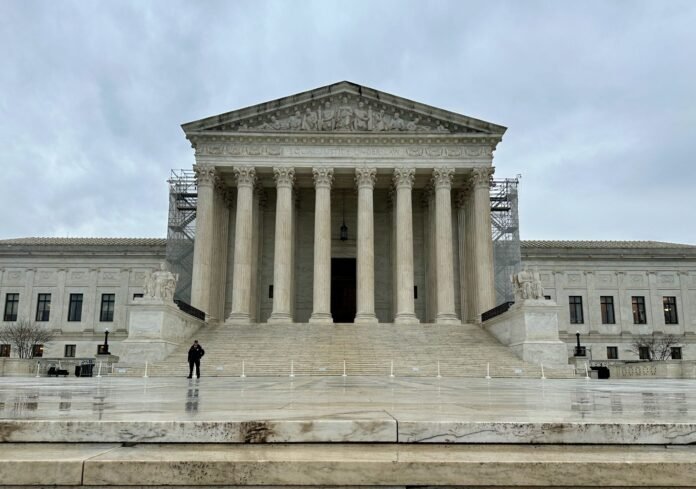DISCUSSION OF CASE
By Ronald Mann
on 10 December 2024
at 10:56
The court will hear Dewberry Group v. Dewberry Engineers Wednesday at 10 EST. (Katie Barlow)
In a long-running trademark dispute between two companies that market real estate development services, both of which use the Dewberry name, a court ruled that Dewberry Group entities infringed on the “Dewberry” marks of Dewberry Engineers. The problem is that when it came time to assess damages, the court ordered the Dewberry Group to pay $43 million in profits earned by several affiliates that were not parties to the lawsuit as damages, reasoning that they were all effectively a “single corporate entity.” When the appeals court accepted that reasoning, the Supreme Court agreed to review the case.
The fundamental issue before the court on Wednesday is that there is a Supreme Court case quite close – USA vs. Bestfoods – in which the justices rejected the government’s argument that the Comprehensive Environmental Action, Compensation and Liability Act was such an important statute that it should carve out an exception to traditional state law doctrines that require a high (indeed, almost insurmountable) bar for actions seeking to ignore corporate identities and, in the common phrase, “pierce the corporate veil.” As the Court explained there, Congress must speak “directly” to the point if it wishes to create a special, less stringent doctrine on something so traditionally left to state law. (These were the days before Elon Musk’s tiff with a Delaware judge raised the prospect of federalizing corporate law.)
The detractors emphasize the language of the Lanham Act, which calls for the erosion of the “defendant’s profits,” language that naturally suggests that a prudent plaintiff should bring suit—thus making “the defendant[s]” – all the entities from which it hopes to receive compensation. Because all of the damages awarded here were profits earned by other entities (none of which was a “defendant”), the infringers argue that none of those profits can properly be disgorged.
Probably because Bestfoods is so clear on the point that the trademark owners, Dewberry Engineers, make no serious effort to defend the argument of the lower courts. Rather, they point to another Lanham Act provision that authorizes the court to assess damages in an “equitable” amount if a mere compensatory award against the “defendant” would be insufficient. Here, the trademark owners claim that a large portion of the profits should properly be attributed to the Dewberry Group, perhaps because shady accounting improperly allocated all the profits to the affiliates, perhaps because the other entities are shams. The obvious problem – as the Dewberry Group points out – is that none of this was argued below, and so there is no factual information to support it.
My guess is that most of the argument will involve the judges examining the extent to which any of the possible reasons for attributing the subsidiaries’ profits to the Dewberry Group have any support in the case when the case comes to court, as well as a lot hand-wringing about how bad it would be for the judges to reach out and address all these issues in the first place. In the end, however, the choices will really be between overturning the decision outright or leaving it to let the lower courts consider some of the new arguments.
